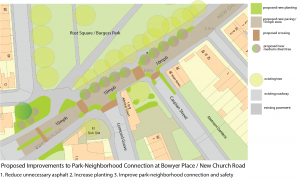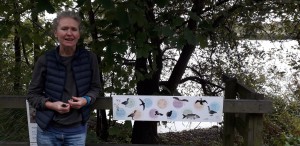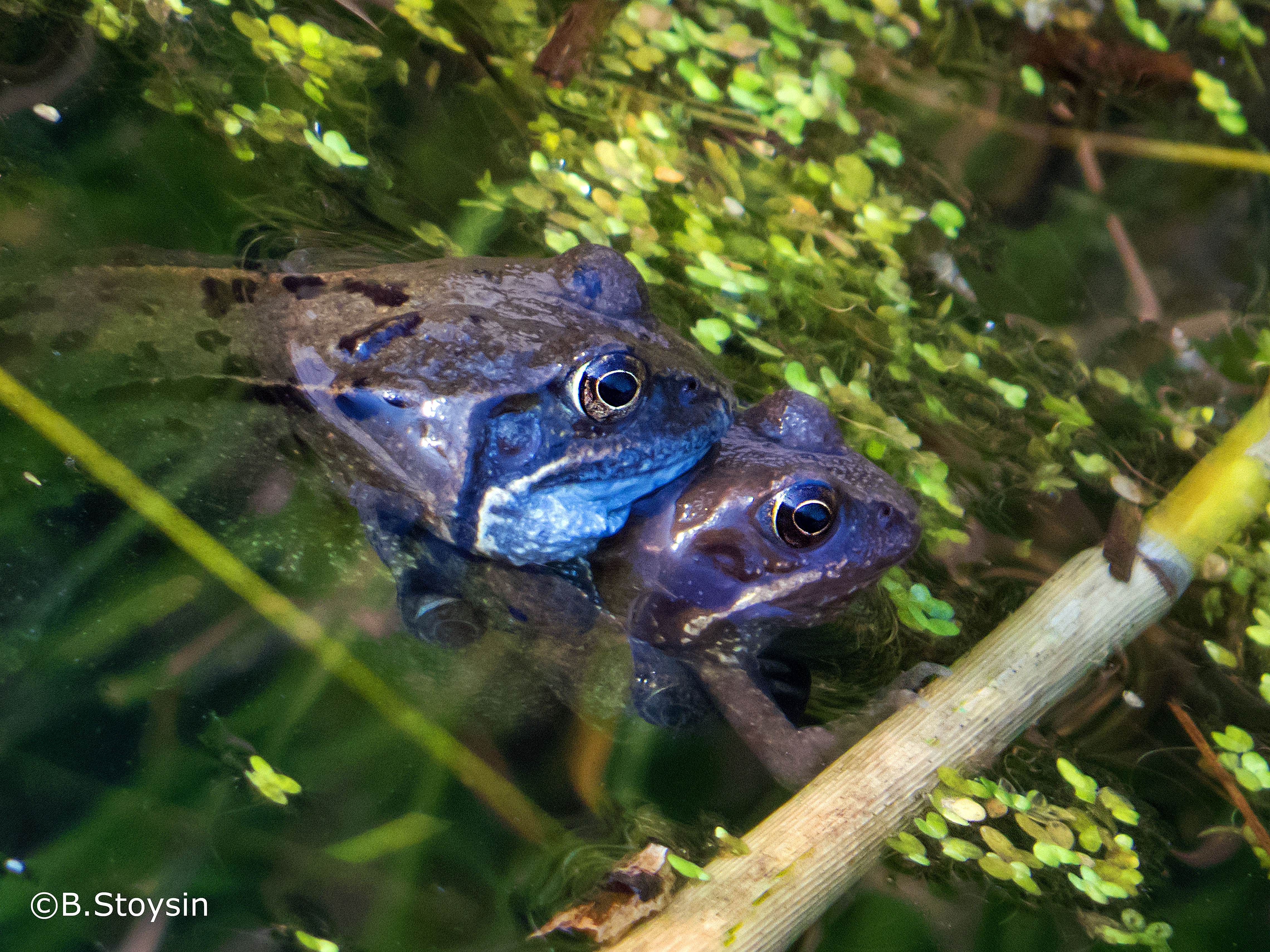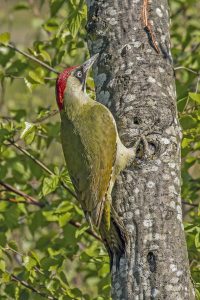 Music events in parks will disturb nesting birds during the breeding season
Music events in parks will disturb nesting birds during the breeding season
David Clark, ornithologist, is concerned about the disturbance of nesting birds during breeding season, traditionally seen as the start of March to the end of June.
In Southwark, GALA provided music festivals during the summer (July, August and September) in Peckham Rye Park. However, for the last ten years these events have been allowed to occur earlier and earlier in the year. Gala will be held 26-28 May this year (2023). In Burgess Park there will be music festivals on 27/28 May and 24/25 June. In Dulwich Park a music festival will be held 9 — 11 June. Music festivals are also occurring at this time in other London boroughs.
There is plenty of academic evidence that noise pollution disturbs and disrupts birds during nesting season and because of this David Clark is against any events occurring during the March to June period.
Read his ornithological blog in which he discusses the effect of continual noise on bird life in parks focusing on the Green Woodpecker. (Image: Charles J. Sharp, CC BY-SA 4.0, via Wikimedia Commons.)
Read the Friends of Burgess Park objections to the Southwark Council approved plan to allow 56 days a year of large-scale events and filming in Burgess Park from 2023. This number is 28 days a year in other large Southwark parks.
Tree and hedge planting
March 2021 a new “forest” is planted in Burgess Park with hundreds of saplings.
Volunteers book to join with Hands On London working with idVerde the parks grounds maintenance team. Volunteering is weekdays 10am to lunchtime.
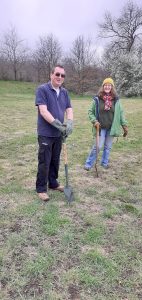
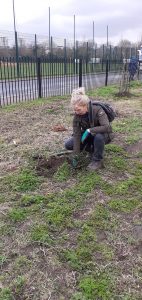
More details on tree species Burgess Tree Planting Neate St and St George’s Way March21.
After planting the tree will be watered and mulched. The plants will need more aftercare to ensure they thrive.
Thanks to HandsOn London who organised the volunteering days.
See the video by City University.
Project Duckling – Burgess Park lake
New islands and bankside repair
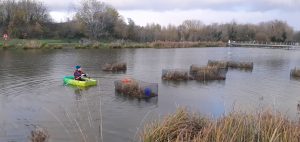
New islands were installed on the lake in December. They will make safe places for the waterfowl to build nests, once the planting is established, later in 2021.
See the islands being installed.
In spring 2021 the bankside will be repaired with additional soil to cover the lake liner and new planting to help oxygenate the water helping to keep it healthy for the wildlife. We will need volunteers to help with the bankside restoration early summer 2021 .
Funded by the Mayor of London Greener City Fund and the Southwark Council Cleaner Greener Safer fund.
Read more about the history of the lake.
Trees and Hedges
Southwark Council plans to increase tree planting. So, during September and October two walks held with park users and the Parks, Ecology and Aboricultural officers, Southwark Council looked at places where trees and hedges could be planted . Read more details.
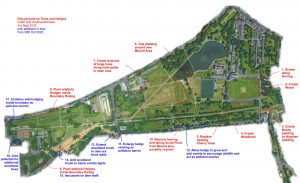
Southwark Nature Action – Nature corridors
Burgess Park west and Bowyer Place -This is the first step of a bigger plan to improve nature corridors between the park and Camberwell Green.
More details and SNAV online questionnaire
Southwark Nature Action Volunteers with Friends of Burgess Park is applying to the Southwark Council Cleaner Greener Safer fund 2020.
Southwark bird box report
A survey and maintenance report on bird boxes was written for Southwark Council and circulated by Jonathan Best, Ecology Officer.
The following parks were visited: Geraldine Mary Harmsworth Park, Pasley Park, Victory Community Park, Salisbury Row Park, Surrey Square, Mint Street Park, Nursery Row Park, St Georges Churchyard and Cobourg Road Nature Area (Burgess Park).
The boxes were inspected and all debris cleaned out. The boxes were then plotted onto maps.
Recommendations by the reporting company Complete Ecology
Despite the lower occupancy rate this year (60% down from 90% in 2019) it is clear that many woodcrete hole fronted nest boxes do get used. It is therefore still recommended that they should be installed in trees in parks and open spaces.
Open fronted boxes appear to be much less successful in attracting birds and much less effective in conserving breeding birds. Wooden ones are also less effective than woodcrete ones as they suffer from predation.
The bat boxes were all found to be in place still, but they were not checked for usage. Bats are protected by law and so a licence is required to open any box which may be in use by bats. Bats do not build nests (unlike birds) so no debris will build up, meaning that they do not need to be cleared out annually.
Read the complete Bird box Maintenance and Survey Report.
Southwark Nature Action
In March 2020 we launched a new project to engage people in taking action to support Southwark’s nature action plan. We are recruiting volunteers to plan, organise and deliver projects in Burgess Park and work with friends groups across all Southwark’s green spaces. We have done this because our precious green spaces and wildlife need systematic programmes of support with a network that work together across green spaces. Our volunteers will enable more people to learn about and engage with nature and enhance our green spaces for everyone.
Read about the launch. Find out about activity.
Listen to the sounds of Burgess Park
Close your eyes and visualise the walk, starting at the new west-end playground near Addington Square, passing through sports facilities and playgrounds, and the underpass, ending up at the Glengall Wharf Garden. The sounds were recorded by Tom Rogers over a weekend in June 2019.
A walk from Walworth Road to Old Kent Road through Burgess Park listening to the sounds of activity all around. The soundscape also incorporates comments from park users recorded as part of the Heritage Lottery oral history project in 2014.
Wild about Waterfowl
Project Duckling is our 2020/2021 project to increase places for the water fowl to nest.
We have been awarded funding from the Mayor of London Greener City Fund and Southwark Council Cleaner Greener Safer. We will add a new island to the lake, repair the bankside to protect the lake liner, a new fence for the lakeside refuge and a planting project with Cobourg School.
In June 2019 we planted oxygenating and mat forming water plants with help from Cobourg School Year 1 class. The plant will provide habitats for pond creatures such as molluscs and dragon fly nymphs.
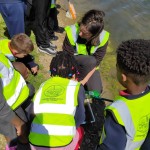
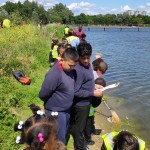
The lake is a much-loved part of the park, but few birds nest on the lake. Mallards, Pochards and Crested Grebe all winter here, it would be lovely to see them raise their young too. We hope that this planting will do the trick.
We put up signage about the waterfowl and fish in the lake. We hope this will help park users know more about wild-fowl, fish and plants and how the lake works as a habitat.
With thanks to Southwark Council Neighbourhood Fund £664 and London Wildlife Trust’s help with pond-dipping. Wild about Wildfowl lake water plant list 2019.
Report wildlife sightings
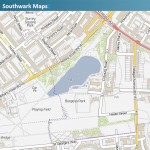 London is home to a diverse range of animals, including everything from bats to reptiles, and Southwark Council is trying to find out which species can be found where in Southwark.
London is home to a diverse range of animals, including everything from bats to reptiles, and Southwark Council is trying to find out which species can be found where in Southwark.
On the Council website you can click on an interactive map, zoom to the location of your sighting and an email link will appear on the left. Enter your email address and click send.
Your records will help the Council to manage wildlife in Southwark and gain a better understanding of what lives where.
Sightings will be collected and shared with the London Biological Records Centre, Greenspace Information for Greater London (GiGL).
Burgess goes wild: The fishing lake
July 2018
Burgess Park fishing lake was redesigned in 2012/13 and opened to the public along with the rest of the park after five years. Nature and caring people have made the lake as you see it today with reed beds … Read the blog
Wild Burgess in May 2018
Any day now, the Lime trees (Common Lime or Linden, Tilia Europea) will come into bloom. They perfume the air with one of the most delightful scents of summer. Walk along the main avenue by the tennis courts … Read more
Burgess goes wild about waterfowl
April 2018
Despite the terrible weather the Friends of Burgess Park were finding out how much people knew about the birds on the lake; their names; what they eat and the problems of feeding bread to the ducks. … Read more
Burgess goes wild
March 2018
In a corner of the English Garden you’ll find Daphne odora. As the name suggests, it has a gorgeous perfume. Spot the frogs in the pond. … Read more
October 2015
London Wildlife Trust have been commissioned to undertake further work to the New Church Road nature area including clearing undergrowth and creating sightlines into the area.
Main works to consist of:
Selective scrub reduction and/or coppicing to reduce areas of dense shade
Selectively felling/thinning of some trees
Deadwood piles to be created in appropriate areas (unlikely in this tranche of works)
The report was commissioned by Burgess Park director John Wade for Southwark Council.
LWT briefed all the Burgess Park Quadron staff on caring for the nature areas and will also provide a watching brief and initially supervise Quadron staff when they work on the nature areas e.g. Glengall scrub, copses and the Albany Road woodland.
